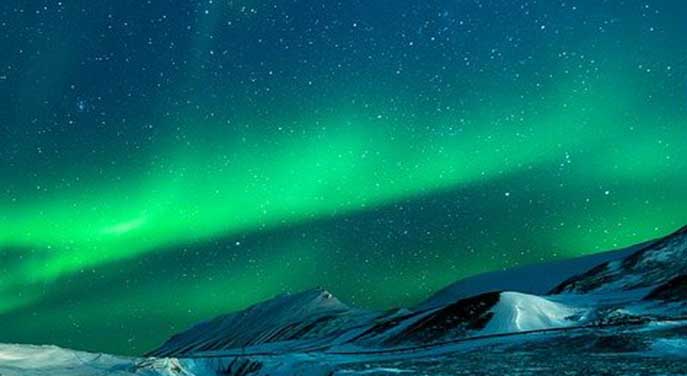 Russia’s 2014 war of aggression against Ukraine – renewed in 2022 – is having worldwide ramifications, and the Arctic region is now experiencing fundamental changes to its overall security structures and infrastructure. Arctic institutions and organizations are being transformed because of Russia’s actions.
Russia’s 2014 war of aggression against Ukraine – renewed in 2022 – is having worldwide ramifications, and the Arctic region is now experiencing fundamental changes to its overall security structures and infrastructure. Arctic institutions and organizations are being transformed because of Russia’s actions.
These changes will continue to reverberate across the entire international system for the foreseeable future. Canada will be particularly hard hit by many of these changes, requiring it to rethink its entire understanding of Arctic security.
Arctic Council
The existing Arctic multilateral, co-operative institutions, along with many of the norms and values that emerged during the Arctic exceptionalism period, have all been significantly damaged. The Arctic Council, the premier international body, was put on “pause” to isolate and punish Russia without necessarily ending the organization. It is not clear under what terms it will be “unpaused” to allow Russia back in, if at all.
Furthermore, it is not at all clear that Russia would be willing to rejoin even if it was given the chance. The Kremlin invaded Georgia in 2008 to stop it from joining NATO and Ukraine in 2014 to prevent Kyiv from joining NATO and the European Union. The full-scale invasion of Ukraine in 2022 has led Finland and Sweden to officially pursue membership in NATO – a development Russia has threatened retaliation in response. Given that the current war has become increasingly characterized as a proxy war against NATO, it seems doubtful that Russia would now be willing to rejoin an organization in which it sits across from soon-to-be seven other NATO members.
One of the core efforts of the Arctic Council and other international bodies has been to respond to the growing threat of climate change. The Arctic is one of the most sensitive issues to this global problem. But in the face of recent sanctions, Russia will need to find new revenue streams to support the war and itself. It will do so by increasing the production of its northern oil and gas to raise revenues. It will probably turn to China as one possible market in which it can expand.
At the same time, Europe will need to find alternatives to the Russian oil and gas supplies they have now boycotted. Assuming that the Europeans do not reverse themselves, one possible alternative source could come from Norway, which could move to increase its northern offshore production. The net effects of these actions could see an overall increase and not a decrease in the production of oil and gas in the Arctic, thereby damaging much of the effort to reduce the reliance on gas and oil.
Canada’s core Arctic foreign policy has been to support a rules-based, circumpolar regional system with a specific focus on addressing climate change and empowering Indigenous peoples throughout the Arctic. All of these objectives are now severely undermined by Russia’s actions. Canada will need to reset its policies that now must take place without Russian participation.
NATO
One of the paradoxical effects of Russia’s wars against both Georgia (2008) and Ukraine (2014, 2022) is that they have now driven Sweden and Finland to seek membership in NATO. Assuming that the current Turkish “concerns” can be met, the addition of these two states will dramatically change the geography of the alliance. Their entry now means that the entire north of Europe would be in NATO, creating a continuous border with Russia from the high north to Ukraine. This will change how NATO must develop its deterrent policy to defend against other potential Russian aggression and will undoubtedly further harden Russian understanding of the alliance.
 |
| RELATED CONTENT |
| Russia’s most formidable weapons? Oil and gas By Rashid Husain Syed |
| Ottawa sleeps while Russia executes its Arctic strategy By Joseph Micallef |
| Why was Canada kept in the dark about “AUKUS”? By Matthew Bondy and Jeffrey Collins |
The United States’ pursuit of much closer military relations with all northern Nordic countries – NATO and non-NATO – since the war first began in 2014 has had the effect of creating an unofficial northern NATO tier that is focused on Arctic security. The Americans are now allowed by the Norwegian government to operate both their fighters, bombers and attack submarines from Norwegian bases. The Norwegians are modernizing and expanding their capabilities to support the Americans at locations such as Troms.
The United States also signed agreements with Finland and Sweden to allow American fighters and bombers to operate from those countries’ military airfields and with their respective air forces. In 2018, Norway established a security arrangement (NORDEFCO) to coordinate its security policies and operational capabilities with Sweden and Finland. They then extended its terms with a 2021 Statement of Intent. What is becoming quite clear is that the Americans have been able to integrate into this agreement, improving the capabilities of a shared aerospace domain awareness and response capability between all the countries involved.
After withdrawing its military aviation from Iceland in 2005, the U.S. has returned and is now increasing its presence. Similarly, despite some political missteps on the part of the previous Trump administration, the Americans have also been improving military relations with Denmark with a focus on expanding the U.S. base in Thule, Greenland. In short, Russia’s invasion of Ukraine has only strengthened and deepened the military co-ordination among northern European states.
In 2011, owing to a perception that the Russian threat was decreasing, the Americans stood down their second fleet, which had been designated to respond to naval threats in the North Atlantic. In 2018, however, the U.S. announced the fleet was being re-established, and it soon engaged in several high-profile deployments involving American aircraft carriers and the navies of the other Nordic NATO countries sailing past the Arctic circle.
NATO also began a renewed series of exercises and operations designed to respond to the growing Russian submarine threat starting in 2015. Named Dynamic Mongoose, these exercises take place in the Norwegian Sea and adjacent areas and involve most of the navies of the northern branch of NATO.
Canada has been involved in some of the maritime exercises. It has sent troops and air assets to some of the larger exercises often hosted by Norway. Canada has no official policy to engage with its Northern NATO allies. However, Canada has been playing an important role in the Baltics, including by leading a NATO battlegroup with over 500 troops in Latvia and maintaining a frigate (currently HMCS Halifax) with the Standing NATO Maritime Group as a deterrent against possible Russian actions in the Baltic region.
NORAD
The United States began to realize the growing threat posed by the new Russian nuclear delivery systems and the hardening Russian political and military intent following the beginning of the Ukrainian War in 2014. The U.S. initiated a re-examination of its nuclear weapon, deterrent policy and national security strategy in the late 2010s and early 2020s, followed by a series of Arctic strategies for each of its core services, including the Coast Guard, Air Force, Navy and Army.
General Glen VanHerck, the commander of U.S. Northern Command and the North American Aerospace Defence Command (NORAD), made it clear in official statements that the Americans have come to recognize the threat posed by the new Russian weapon systems. The U.S. has been modernizing its capabilities under the concept of “integrated deterrence,” though it is not yet completely clear what this will look like. But one of the critical points that flows from this new awareness is a need to modernize the surveillance and response capabilities of the NORAD alliance.
The U.S. has already started looking to add significant investments to improve its capabilities in Alaska and working closely with the Danish government to modernize the capabilities in Thule, Greenland. Canada, since 2017, has acknowledged the need to modernize NORAD but has been reluctant to dedicate the resources to do so. Canada’s Minister of Defence Anita Anand has recently committed to spending $5 billion over six years to modernize NORAD. The government also finally entered into negotiations to acquire the F-35 as its fighter replacement. But, given the decades-long challenges of this procurement project, it seems prudent to wait until the deal has been signed before counting this as a win. However, Canada still shows no sign of joining NATO and the U.S. on ballistic missile defence.
Russia’s war in Ukraine has recast the entire Arctic security architecture. The established co-operative bodies have been badly shaken, and a new urgency has been given to the existing military alliance system. These changes are not cosmetic or temporary. There is a new Arctic security threat environment (NASTE) that must be understood as it evolves.
Rob Huebert is an associate professor of political science at the University of Calgary and Senior Fellow at the Macdonald-Laurier Institute.
For interview requests, click here.
The opinions expressed by our columnists and contributors are theirs alone and do not inherently or expressly reflect the views of our publication.
© Troy Media
Troy Media is an editorial content provider to media outlets and its own hosted community news outlets across Canada.


